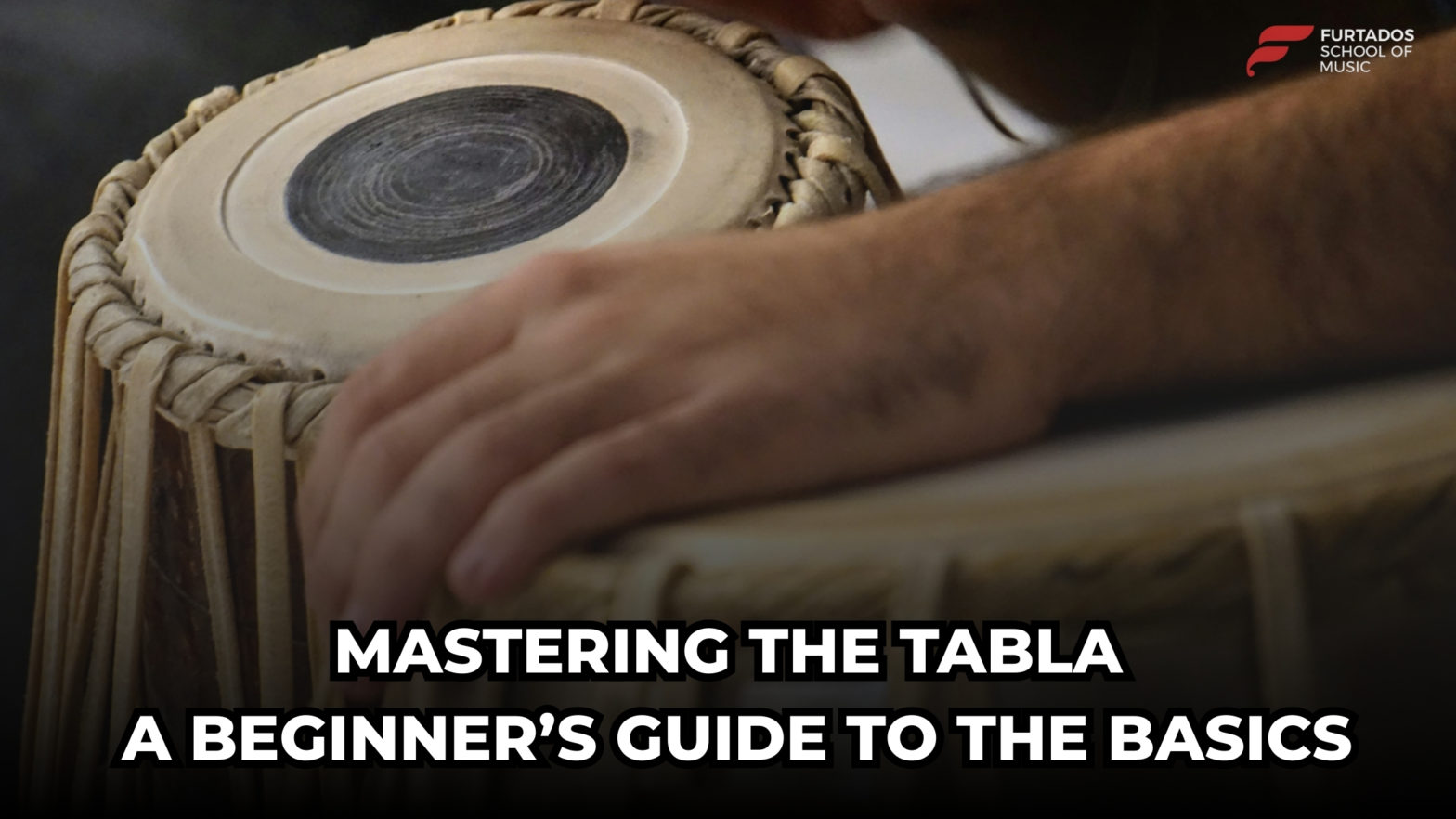The Tabla is one of the most iconic percussion instruments in Indian music, known for its rich rhythms and deep cultural significance. Whether you’re passionate about Indian classical music or looking to enhance your sense of rhythm, learning the tabla is an exciting and rewarding journey. At Furtado School of Music (FSM), we offer a structured and engaging tabla course that helps beginners grasp the fundamentals and develop strong playing techniques.
In this guide, we’ll explore the basics of the tabla, including its structure, essential hand positions, common taals (beats), and the importance of regular practice.
Understanding the Structure of Tabla (Dayan & Bayan)
A tabla set consists of two drums:
Dayan (Right Drum)
- The smaller drum, usually made of wood, produces higher-pitched sounds.
- Played with the dominant hand (right for most players, left for left-handed players).
- Creates clear, sharp strokes that define the rhythm.
Bayan (Left Drum)
- The larger drum, typically made of metal or clay, produces deeper, bass-heavy tones.
- Played with the non-dominant hand to create resonance and dynamic effects.
- The pressure and hand movements change the sound, adding expressiveness to the rhythm.
Understanding these two components is essential before diving into playing techniques.
Basic Hand Positions and Strokes
Learning to play the tabla starts with mastering a few essential hand positions and strokes, also known as “bols.” Here are the fundamental ones:
Na & Tin
- Played on the Dayan (right drum).
- Na is a sharp, ringing sound played by striking the rim with the index or middle finger.
- Tin is produced by tapping the center with the fingertips for a slightly muted tone.
Dha & Dhin
- Dha combines strokes on both Dayan and Bayan, producing a full, resonant sound.
- Dhin is played only on the right drum but with more emphasis.
Ge & Ke
- These are bass sounds played on the Bayan (left drum).
- Ge is a deep, resonating stroke by pressing and sliding the palm on the skin.
- Ke is a sharp tap without any sliding motion.
By practicing these strokes regularly, beginners develop control and fluency, forming the foundation for playing rhythms.
Introduction to Simple Taals (Beats) Like Teen Taal & Dadra
A taal is a rhythmic cycle in Indian music that sets the tempo and structure for compositions. Here are two common taals for beginners:
Teen Taal (16 Beats)
- One of the most famous taals used in classical, folk, and even Bollywood music.
- Has four sections (vibhags) of 4 beats each (4+4+4+4 = 16).
- Basic Theka (rhythmic pattern):
Dha Dhin Dhin Dha | Dha Dhin Dhin Dha | Na Tin Tin Na | Na Dhin Dhin Dha
Dadra Taal (6 Beats)
- A simpler, faster taal often used in light classical and folk music.
- Consists of two sections (vibhags) of 3 beats each (3+3 = 6).
- Basic Theka:
Dha Dhin | Na Dha | Tin Na
Learning these taals helps students develop rhythm and timing, which are crucial for playing along with other musicians.
Why Practice is Key to Developing Rhythm
Tabla playing is an art that requires patience and discipline. Regular practice is essential for:
- Building muscle memory – The more you repeat strokes and taals, the more naturally they flow.
- Developing speed and precision – With daily practice, your fingers and hands become more agile.
- Enhancing coordination – Playing tabla improves overall musical timing and hand coordination.
- Understanding musical expression – Rhythm is not just about keeping time; it’s about feeling the music.
At Furtado School of Music, our tabla courses are designed to provide structured guidance and personalized feedback to ensure students progress smoothly. Our expert instructors focus on technique, rhythm sense, and musical creativity, helping students build a strong foundation in tabla playing.
Why Learn Tabla at Furtado School of Music?
Expert Faculty – Learn from highly trained tabla professionals with years of experience.
- Structured Curriculum – Step-by-step lessons covering fundamentals, advanced techniques, and compositions.
- Interactive Learning – Hands-on training with practice sessions, exercises, and live demonstrations.
- Performance Opportunities – Showcase your skills in concerts, recitals, and jam sessions.
At FSM, we believe in making music education fun, engaging, and accessible to everyone. Whether you’re a complete beginner or someone looking to refine your skills, our tabla course is the perfect place to start!
Ready to Begin Your Tabla Journey?
If you’re eager to dive into the world of tabla and master its rhythms, join Furtado School of Music today! Our expert instructors will guide you through the essentials, helping you become a confident and skilled tabla player.Enroll now and start your musical adventure!
